From Augmented and Virtual Reality to mobile and desktop, a new audience is emerging across the full scale of immersive learning technologies. In recent years, the financial sector has been increasingly turning to these tools to solve their biggest learning challenges.
It has been long understood how immersive technologies can be applied to practical tasks. Sectors such as construction, utilities, health and safety, have utilised a more virtual approach to remove physical risk and provide an environment where it’s safe to fail.
Can the benefits of immersive technologies be applied to office-based knowledge workers, such as those in the financial sector? At Make Real we’ve been working with a number of financial organisations, to incorporate immersive technologies into their day-to-day operations and training programmes. Here we’ll take a look at some of the highlights and beneficial outcomes created as a result.
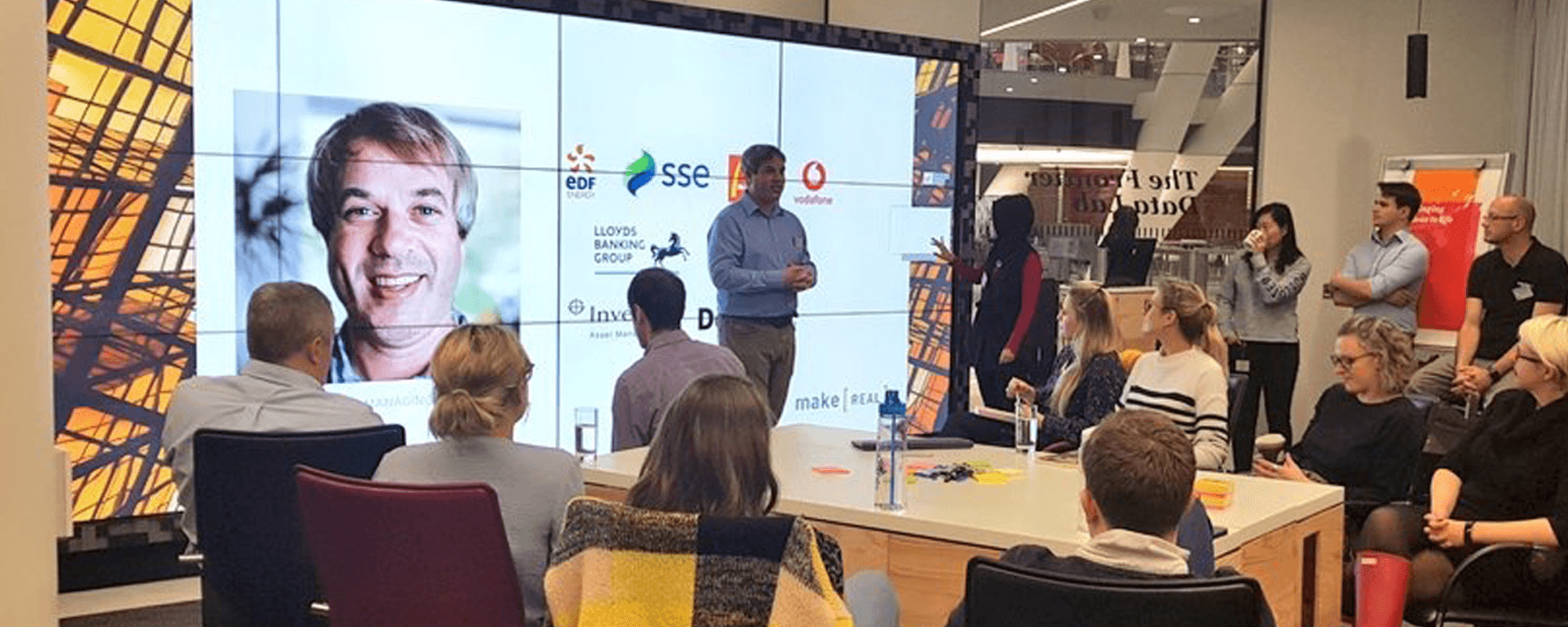
Image: Workshopping immersive learning experiences
One area of training that has needed enhancing for a number of years is finally receiving some effective love and attention with the evolution of VR devices, and that’s interpersonal skills training (what we used to call soft-skills).
Previously it’s been an area of training that’s been hard to deliver consistently, has been hard to provide objective feedback on and involves aspects like roleplay that has disengaged learners. Interpersonal skills training in VR addresses a number of these pain points.
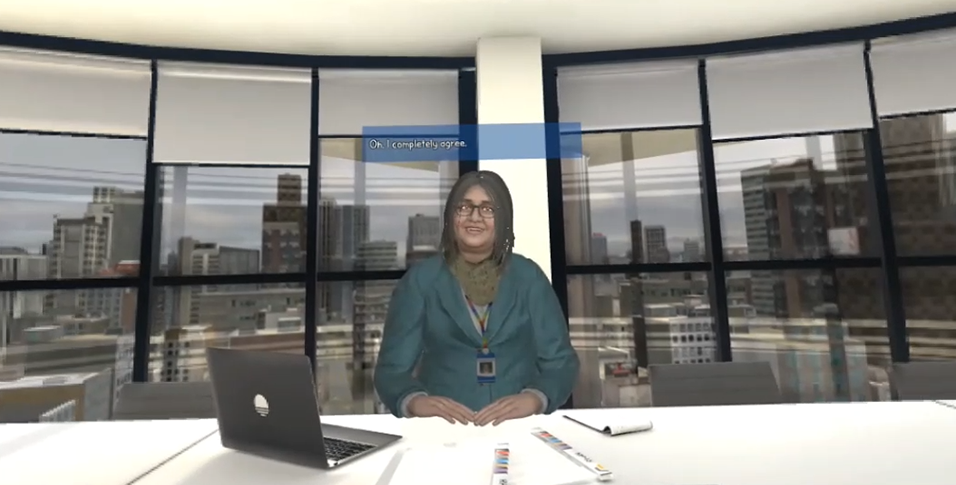
Image: Immersive soft skills relationship management training
From well-being and resilience to customer experience and relationship management, to personnel development and coaching, interpersonal training covers a wide range of topics that can be conveyed within the headset.
The benefits of this approach has been realised by a number of our financial clients[1][2]. These have included:
VR enables these outcomes through features such as embodiment (placing a learner in someone else’s shoes) and agency (informed learner choice), created through psychological presence and technical immersion within a scenario. This is coupled with advances to character creation that provides believable, life-like avatars that learners connect and relate to, boosting empathy without breaking the bank.
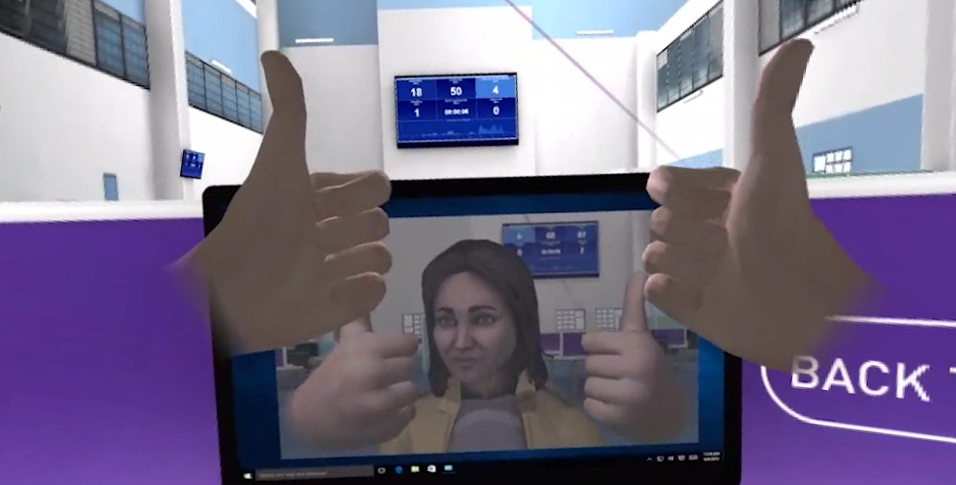
Image: Embodiment in VR enables the learner to become someone else
Video has long been used for eLearning content. It’s great for showing the authentic behaviours that can either drive or hamper performance. By utilising video within immersive technologies, such as interactive video, branching narratives or 360º content, learning outcomes can be met more meaningfully and with a greater level of fidelity.
Whilst HTML5 has been a common content creation tool for many years, emerging WebXR and three.js code standards are enabling more dynamic user journeys, greater immersion and active learning outcomes rather than a linear, passive experience.
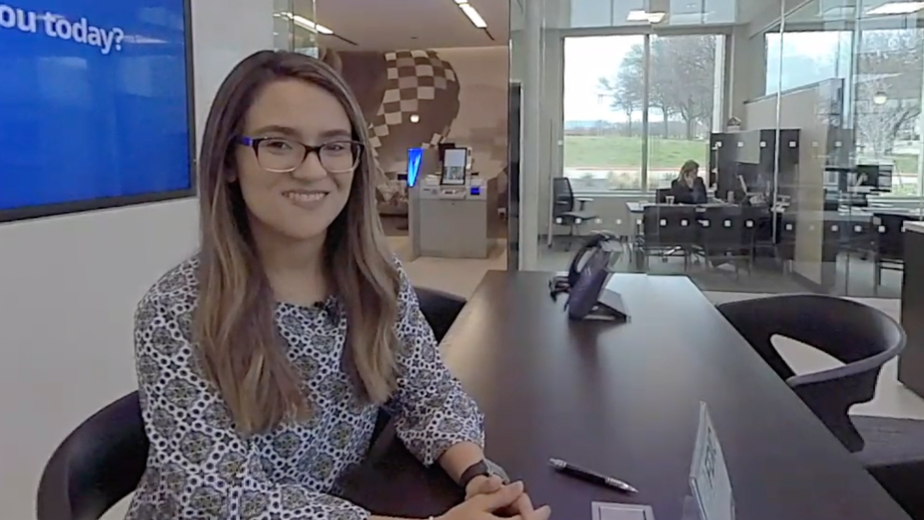
Image: Staff onboarding and familiarisation through 360º video
360º video can be viewed through a “magic window” on desktop but preferably in a Virtual Reality (VR) headset, to enable the learner to feel present within the scene. With direct control over their viewpoint and focus, this allows the learner and the facilitator to review an attention heatmap for self-review and feedback. However, this creates a new set of challenges for the film director, to make sure the learner doesn’t miss important elements of the narrative or relevant action. Therefore it’s key to pick your content partners carefully.
Further developments in the field are on the horizon. Emerging volumetric capture and lightfields for film are enabling movement through the scene, rather than being stuck where the camera, or cameras, were positioned. This is set to add greater immersion and will get away from the ‘Patrick Swayze Effect’, where they feel like a ghost that the characters are not aware of.
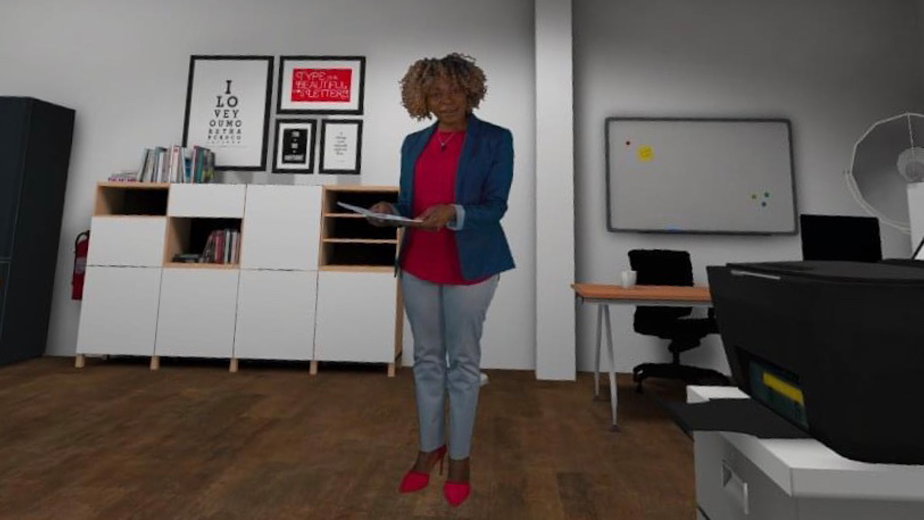
Image: Low-cost volumetric capture allows believable characters
Serious games, or gamified experiences, can help make learning more fun and sticky, whilst remaining focused on learning outcomes and authenticity of content. Beyond levels, badges and 3-star completion scores, gamification is designed to actively appeal to learning and user needs. I can fuel their appetite for continuation and completion, whilst adding a healthy mix of competition and camaraderie.
Experiences can be created for group learning from anything as simple as clue cards to tablets or headsets, depending upon the purpose and complexity of the design. These experiences can be played either with a team all physically present together in a room or remote and across a set of the same devices or a range of different ones.
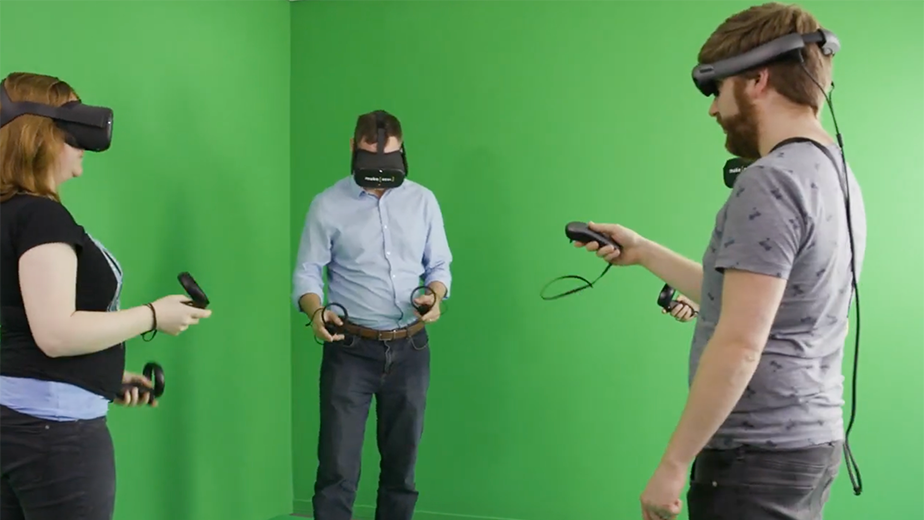
Image: Serious games can be deployed across a range of devices
Beyond real-time, games can be asynchronous, where each turn can be taken within a set time-frame, allowing self-learning or bitesized experiences. Or they can be asymmetrical where each user has a slightly different experience, depending upon their role or responsibilities within the training scenario. This enables repeat play and re-enforcement of learning concepts, where it is important to understand many sides or angles of a scenario.
By leveraging the features of devices we already have in our pockets or sat on our desks, we can create immersive learning experiences without taking learners out of their comfort zone unnecessarily, investing in new hardware or needing to navigate new IT policies.
For example, we have taken aspects of immersive experiences like embodiment, to utilise via laptop webcams recording video of the learner to play back to themselves. This forms part of training around how to communicate via video chat applications, now heavily leaned upon during these times of required, or increasing desired, remote working.

Image: Virtual induction event experience for new employees
As the world adapts to life post-pandemic, it will be key to support our employees and learners in ways that maintain a level of engagement and connectedness, even if we cannot be physically present within an office or classroom learning location. Many employees will be returning to work after extended periods of furlough and will require re-onboarding and up-skilling to ensure they are up-to-speed with their colleagues and new ways of working, which could include more flexible options between office and remote locations.
Similarly, there will be opportunities to bring new employees onboard from across sectors, or other internal departments. Recent reports[3] show there have been increases in internal hires, with re- and up-skilling of existing employees key factors for L&D teams as we adapt organisations post-pandemic. This will create challenges for building new skillsets, as they transition from past experiences and knowledge bases, into the new ones needed to survive.
Rather than relying on the same-old learning methods and linear content, bringing with it the known limitations and shortcomings, this new way of working requires offers us an opportunity to learn in more creative, immersive and memorable.
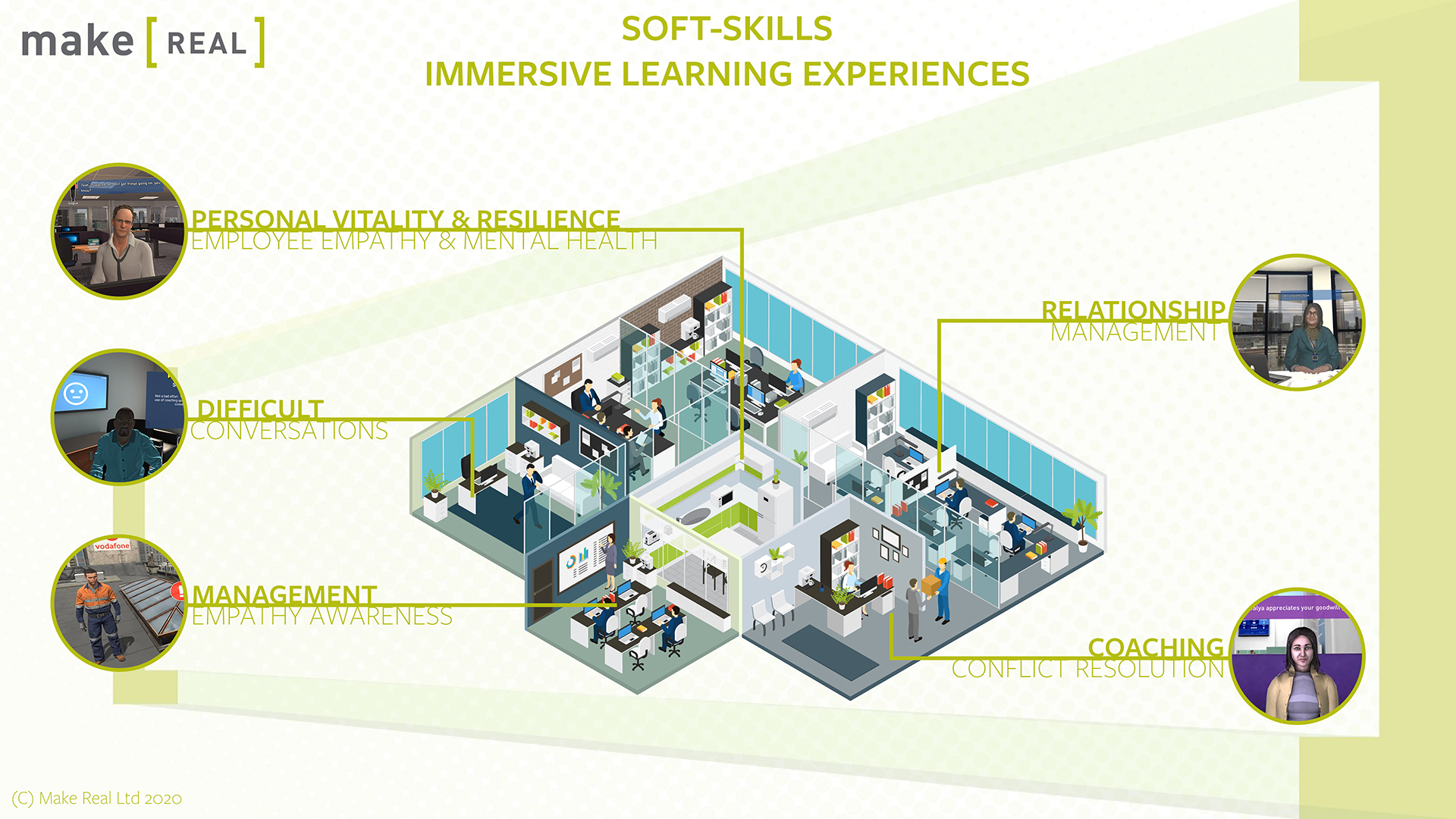
At Make Real we have spent the past few years exploring how to validate uses of immersive technology for interpersonal skills training. Since early 2020, we’ve been working with clients on how to adapt methodologies that worked face-to-face effectively but are no longer possible. Get in touch to discuss how our new solutions to your old problems can be brought to life for your organisation.
References:
[1]: Why Use VR for Soft Skills Interpersonal Training
[2]: PwC Soft Skills VR Training Study
[3]: LinkedIn Learning Report
We’re always happy to talk to you about how immersive technologies can engage your employees and customers. If you have a learning objective in mind, or simply want to know more about emerging technologies like VR, AR, or AI, send us a message and we’ll get back to you as soon as we can.